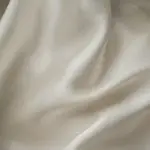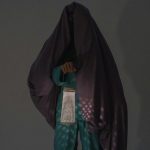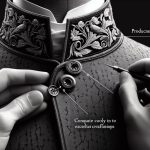Are you confused about the difference between a cloak and a cape? These two classical garments may seem similar at first glance, but they have distinct differences in both style and function. Understanding these differences can help you choose the right garment for your needs and preferences.
In this article, we will explore the origins and history of cloaks and capes, as well as the differences in their style and design. We will also delve into the differences in their function, including when and where each garment is most appropriate to wear.
By the end of this article, you will be able to confidently choose between a cloak and a cape, and care for your garment properly to ensure it lasts for years to come.
Table of Contents
Overview of Cloaks and Capes
Let’s take a closer look at the differences between cloaks and capes, shall we? Both garments are often associated with medieval times and fantasy stories, but they have different features and uses.
A cloak is a long, loose outer garment that covers the body from the neck down to the ankles. It typically has a hood and can be fastened with a clasp or a button at the neck. Cloaks were worn for warmth, protection from the rain or wind, and as a symbol of rank or identity.
In contrast, a cape is a shorter and more decorative garment that covers only the back and shoulders. It can be worn with or without a hood and usually doesn’t have any fasteners. Capes were often worn by superheroes, magicians, or wealthy individuals to show off their style and power. They are also common in formal wear, especially for women, as a way to add elegance and flair to a dress or suit.
While both cloaks and capes have historical and cultural significance, they represent different aspects of fashion and functionality. Cloaks serve a practical purpose as outerwear, while capes are more of a fashion statement. However, both garments can still be seen in modern times, especially in cosplay, theater, and Halloween costumes.
Understanding the differences between cloaks and capes can help you choose the right one for your needs and express your personal style.
Origins and History of Cloaks
You might be surprised to learn that cloaks have been worn for centuries, with evidence of their use dating back to ancient times. Here are three interesting facts about the origins and history of cloaks:
-
The word ‘cloak’ comes from the Latin ‘cloaca,’ which means ‘sewer.’ This is because the first cloaks were made from animal skins that were sewn together to create a waterproof garment. These early cloaks were worn by hunters and fishermen to protect themselves from the elements.
-
Cloaks were also worn by warriors in many different cultures throughout history. In ancient Rome, soldiers wore cloaks called ‘sagums’ that were made from wool and fastened at the shoulder with a fibula. In medieval times, knights wore cloaks called ‘surcoats’ that were emblazoned with their coat of arms.
-
Cloaks were also a popular garment among women in the Middle Ages. Women wore cloaks made from fine fabrics like silk and velvet, often decorated with embroidery and fur trim. Cloaks were seen as a symbol of wealth and status, and were worn by royalty and nobility as well as the wealthy merchant class.
Overall, cloaks have a long and fascinating history that spans many different cultures and time periods. From hunters and warriors to women of wealth and status, cloaks have been a versatile and practical garment for centuries.
Origins and History of Capes
So, you want to know more about capes? Well, let’s dive into the origins and history of this classic garment.
Capes have been around for centuries and have served as both practical and fashionable accessories. They’ve been featured in popular culture references like superhero costumes and medieval attire.
Fashionable Use as Accessories
Wearing a cloak or cape as an accessory can add an air of mystery and elegance to any outfit. These classic garments have been making a comeback in recent years, with fashion designers incorporating them into their collections.
Here are a few reasons why capes and cloaks are becoming popular again:
- They add a dramatic element to any outfit, making it stand out from the crowd.
- They’re versatile and can be worn with a variety of clothing styles, from casual to formal.
- They can be used to keep warm on chilly days while still looking fashionable.
If you’re looking to add some flair to your wardrobe, consider investing in a cloak or cape. With so many styles and materials to choose from, you’re sure to find one that suits your personal style. Give yourself the gift of elegance and mystery by adding this timeless accessory to your collection.
Popular Culture References
In movies and TV shows, we often see mysterious characters draped in flowing black fabric, adding an air of intrigue and danger to their persona. This is where the cloak and cape come into play.
Both garments have been featured in popular culture for decades, from the iconic superhero capes to the dramatic cloaks worn by wizards and witches in the Harry Potter films. One of the most recognizable cape-wearing characters is Batman. His black cape not only serves as a symbol of his superhero identity but also has practical uses, such as gliding through the air and shielding himself from attacks.
On the other hand, cloaks have been seen in various fantasy and sci-fi movies, such as Lord of the Rings and Star Wars. These cloaks are often associated with magic and power, worn by characters who possess special abilities or belong to a secret society.
Overall, both the cloak and cape add an element of drama and mystery to characters in popular culture, making them even more memorable.
Differences in Style and Design
Take a look at the differences in style and design between a cloak and a cape, and you’ll notice how each garment has its own unique flair.
A cloak typically has a full-length design that covers the wearer’s shoulders, arms, and sometimes even the head. It often features a hood and is made from heavy materials like wool or velvet.
On the other hand, a cape is shorter, usually only covering the shoulders and back, and may or may not have a hood. It’s often made from lighter materials like silk or cotton.
Another key difference between the two garments is their purpose. Cloaks were traditionally worn as a form of protection from the elements, with their heavy materials providing warmth and water resistance. They were also used to conceal weapons or other items.
Capes, on the other hand, were more of a fashion statement, worn as an accessory to a formal outfit or as part of a superhero costume.
When it comes to fashion, both cloaks and capes have seen a resurgence in popularity in recent years. Designers have taken these classic garments and given them modern updates, using new materials and incorporating bold colors and patterns.
Whether you prefer the dramatic flair of a long cloak or the sleek simplicity of a short cape, there’s no denying that both of these garments have a timeless appeal.
Differences in Function
The dissimilarity in the purpose of each garment is evident from their respective designs and materials. Cloaks are typically made of heavier materials, such as wool, and are designed to provide warmth and protection from the elements. They often have hoods or collars to further shield the wearer from wind and rain.
On the other hand, capes are usually made of lighter materials, such as silk or velvet, and are intended to be decorative accessories or to add a touch of elegance to an outfit. If you’re looking for a garment to keep you warm and comfortable in cold weather, a cloak is the way to go. It’s perfect for outdoor activities like hiking or camping, as it provides ample coverage and protection from the elements.
Cloaks are versatile and can be worn over multiple layers of clothing, making them a great option for those who want to stay warm without sacrificing style. If you’re attending a formal event or looking to add a touch of sophistication to your outfit, a cape is an excellent choice. It can be draped over your shoulders to create a dramatic effect or worn over a dress to add a bit of flair.
In addition, capes are often lightweight and easy to carry, making them a convenient accessory to have on hand for any occasion.
How to Choose the Right Garment
When it comes to selecting the perfect piece to elevate your outfit, you may be wondering which of these two fashionable items is right for you. Choosing between a cloak and a cape can be a difficult decision, as both garments have their own unique style and function. To help you make the right choice, consider the following factors: occasion, personal style, and functionality.
Occasion is an important factor to consider when choosing between a cloak and a cape. Cloaks are typically more formal and elegant, making them perfect for special occasions such as weddings or galas. On the other hand, capes are more versatile and can be worn for both casual and formal events. If you’re looking for a piece that can be dressed up or down, a cape may be the better option for you.
Personal style is also important when selecting the right garment. If you prefer a more traditional and classic look, a cloak may be the way to go. On the other hand, if you’re looking for something more modern and edgy, a cape may be more your style. Additionally, consider the color and texture of the garment to ensure it complements your personal taste and wardrobe.
To help visualize the differences between a cloak and a cape, consider the following table:
| Cloak | Cape |
|---|---|
| Formal and elegant | Versatile and adaptable |
| Traditional and classic | Modern and edgy |
| Typically worn for special occasions | Can be worn for both casual and formal events |
Ultimately, the decision between a cloak and a cape comes down to your personal preferences and needs. Consider the occasion, your personal style, and the functionality of the garment to make the right choice for you. Regardless of which you choose, these classic garments are sure to add a touch of sophistication and elegance to any outfit.
Care and Maintenance
When it comes to taking care of your cloak or cape, there are a few key points to keep in mind.
First, proper cleaning and storage can help ensure that your garment lasts for years to come.
Secondly, if your cloak or cape becomes damaged, it’s important to know how to repair it or seek professional alterations if needed.
Finally, regular maintenance is key to keeping your cloak or cape looking its best, so be sure to take the time to care for it properly.
Cleaning and Storage
To keep your cloak or cape in pristine condition, remember to regularly clean and store it properly. Don’t neglect these steps if you want to continue to impress with your elegant look.
First, check the care label or instructions that came with your garment to determine the appropriate cleaning method. Some cloaks and capes may need to be dry cleaned, while others can be hand washed or machine washed on a gentle cycle.
When storing your cloak or cape, it’s important to keep it in a cool, dry place away from direct sunlight. Hanging it on a sturdy hanger or folding it neatly in a drawer or closet will help prevent wrinkles and creases.
Avoid storing it in a plastic bag, as it can trap moisture and cause mildew or other damage. With proper cleaning and storage, your cloak or cape will remain a timeless and elegant addition to your wardrobe for years to come.
Repair and Alterations
If you want to make your cloak or cape fit better or repair any damage, you can take it to a tailor for alterations. A tailor can adjust the length or width of your garment, add or remove a hood, or replace any damaged fabric. However, before bringing your cloak or cape to a tailor, you should carefully inspect it for any damage or wear. If there are any tears or holes, you should patch them up before taking it to a tailor, as they may not be able to work with damaged fabric.
Here are three things to keep in mind when considering alterations or repairs for your cloak or cape:
-
Choose a tailor who has experience working with these types of garments. Cloaks and capes are often made from thicker fabrics and have unique design elements, so it’s important to find a tailor who knows how to work with these materials.
-
Be clear about what you want done. If you want your cloak or cape to be shorter or have a different style of hood, make sure to communicate this clearly to your tailor. They may have suggestions for how to achieve the look you want.
-
Consider the cost of alterations. Depending on the amount of work that needs to be done, alterations can be expensive. Before committing to any changes, make sure to get a quote from your tailor and weigh the cost against the benefits of having a properly fitting or repaired cloak or cape.
- A Manufacturer’s Guide to Polyester and Fiberglass Scrim Suppliers - June 26, 2025
- The Engineering Behind Reinforcement Laid Scrims in Modern Composites - June 26, 2025
- Scrim as a Substrate: Its Use in Foils, Flooring, and Packaging - June 26, 2025






